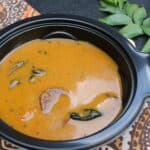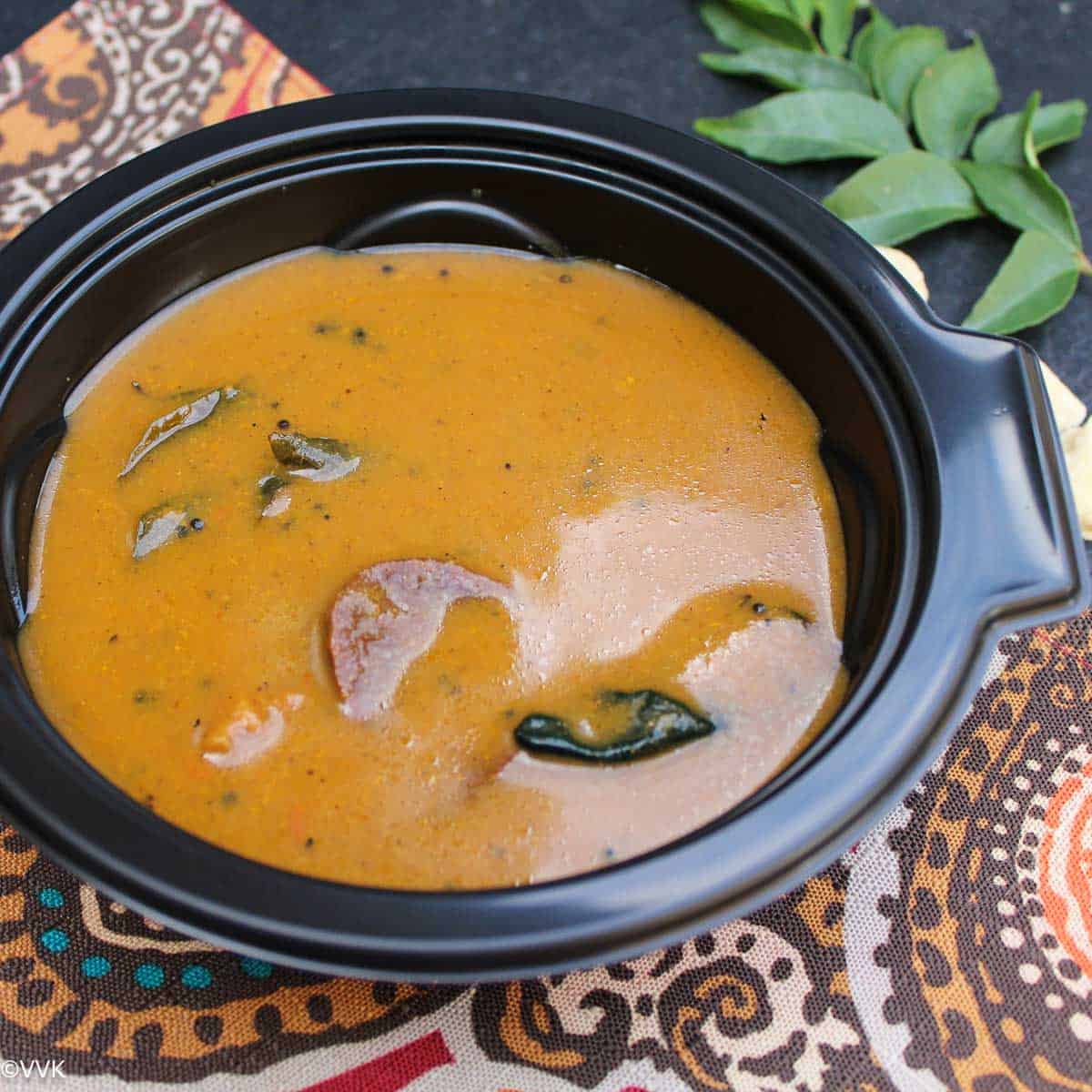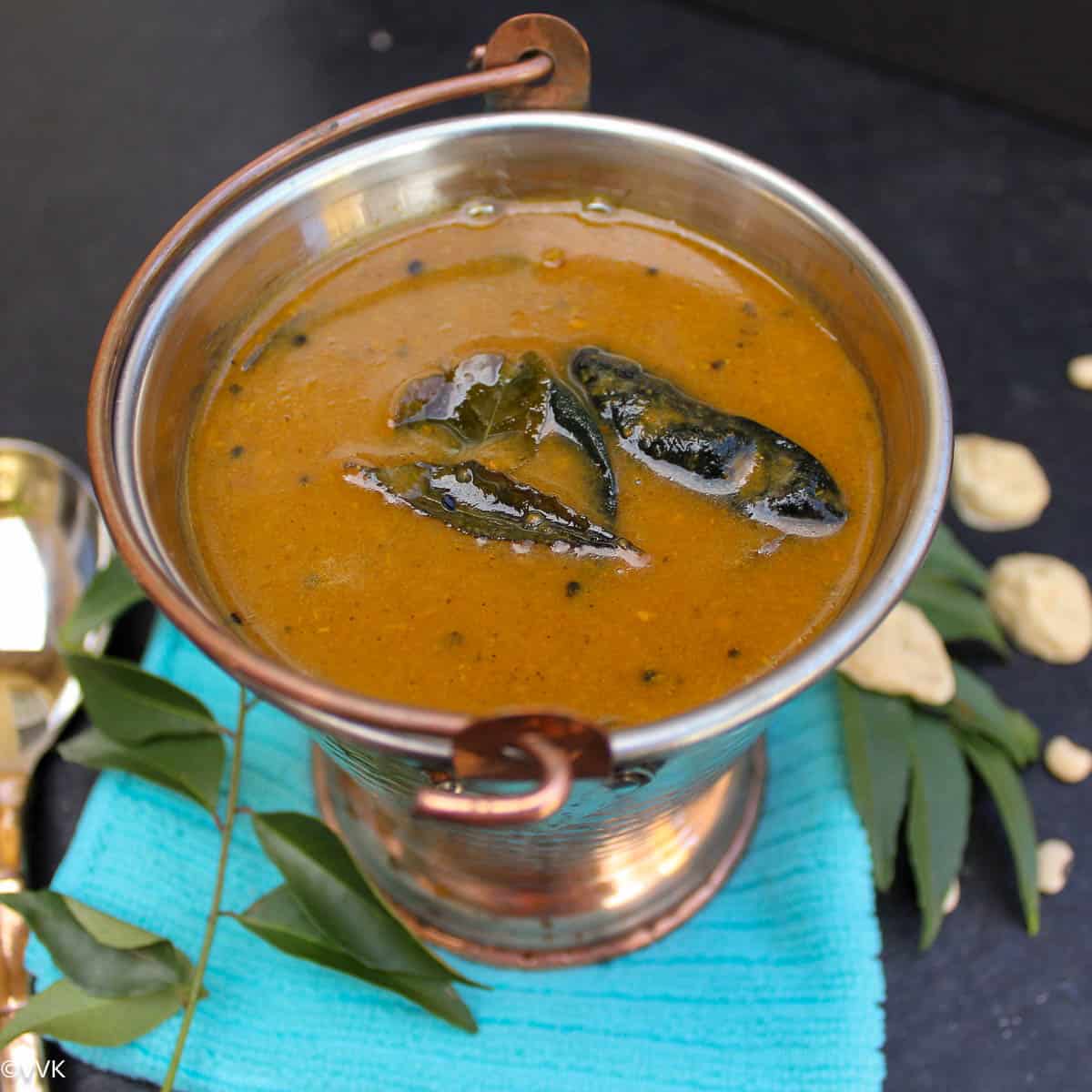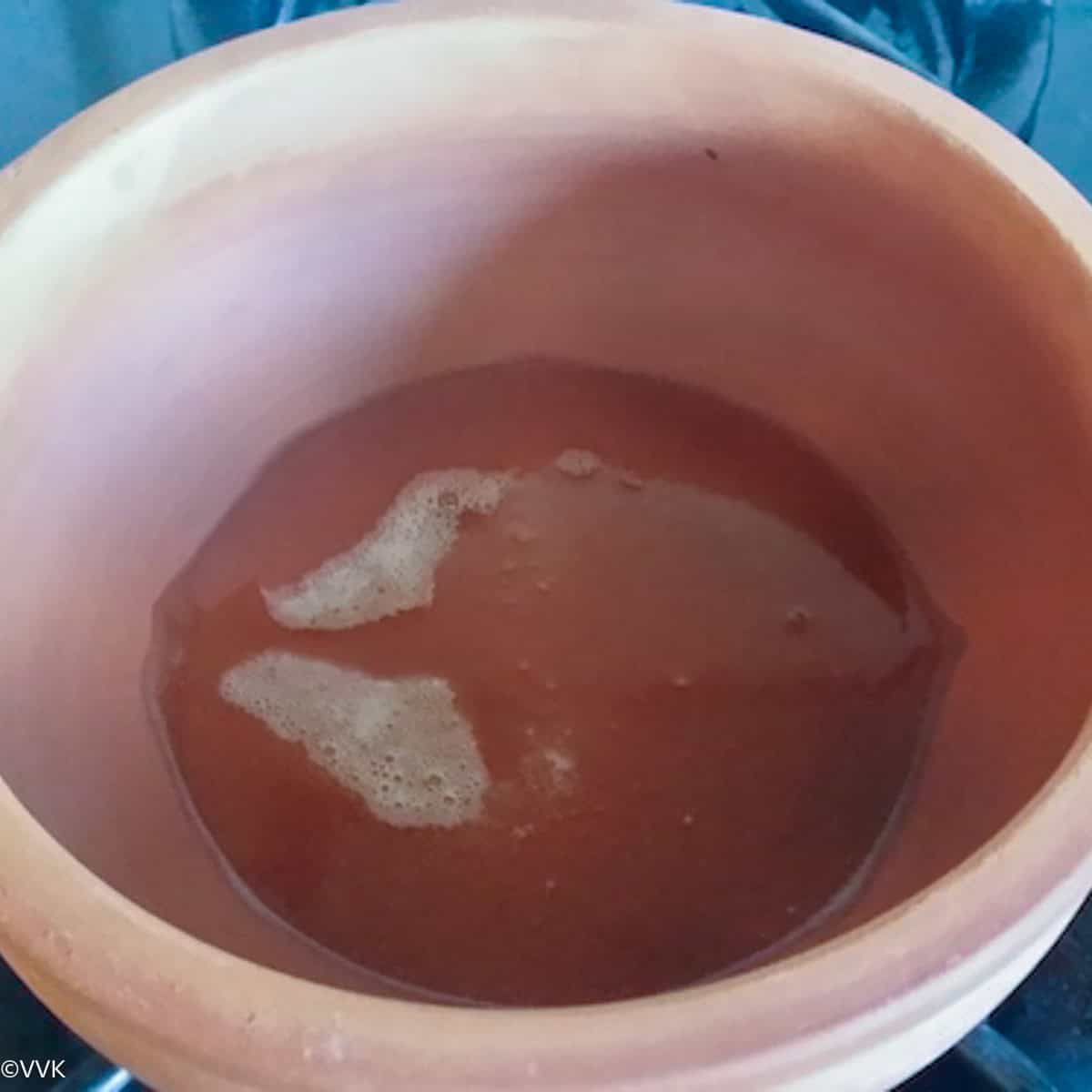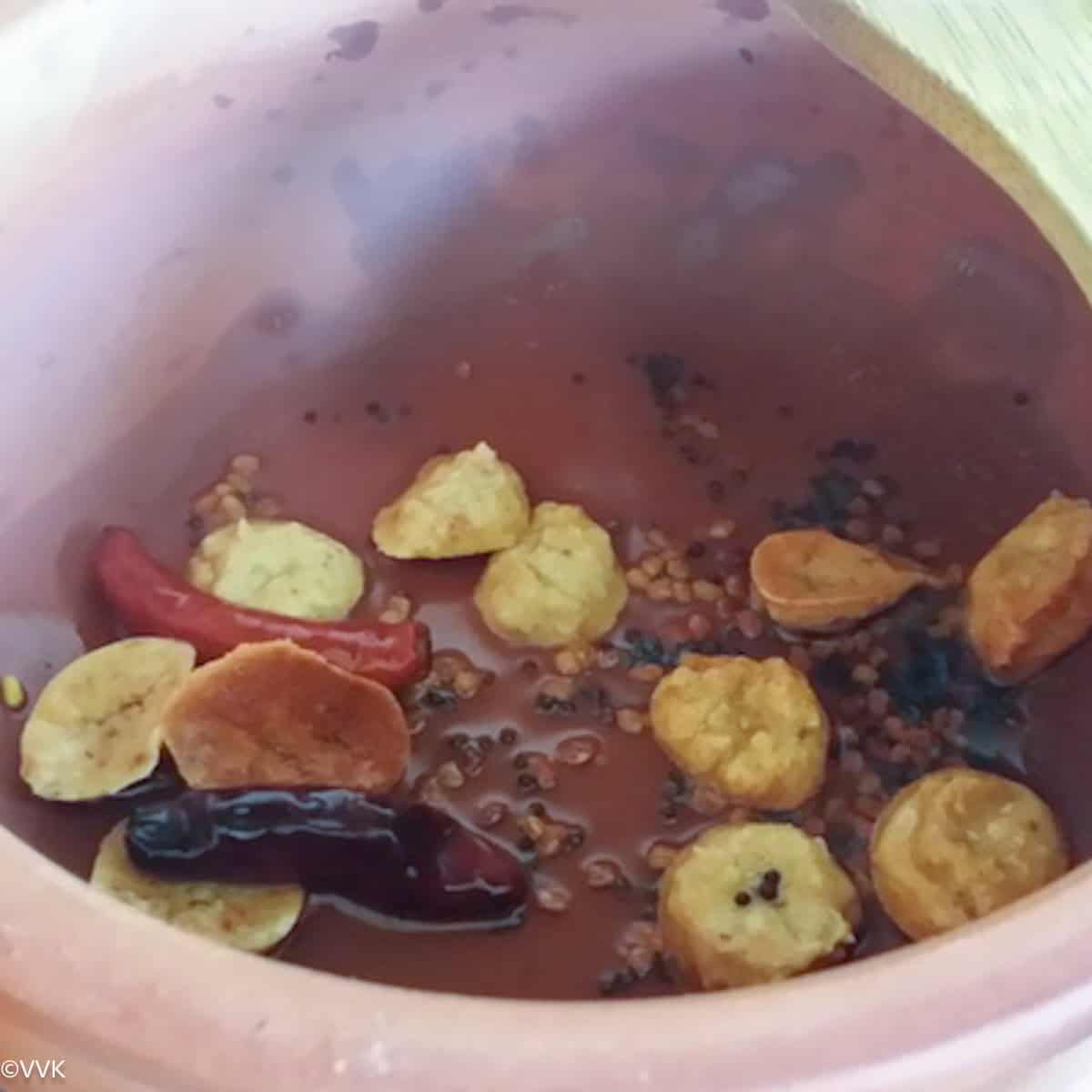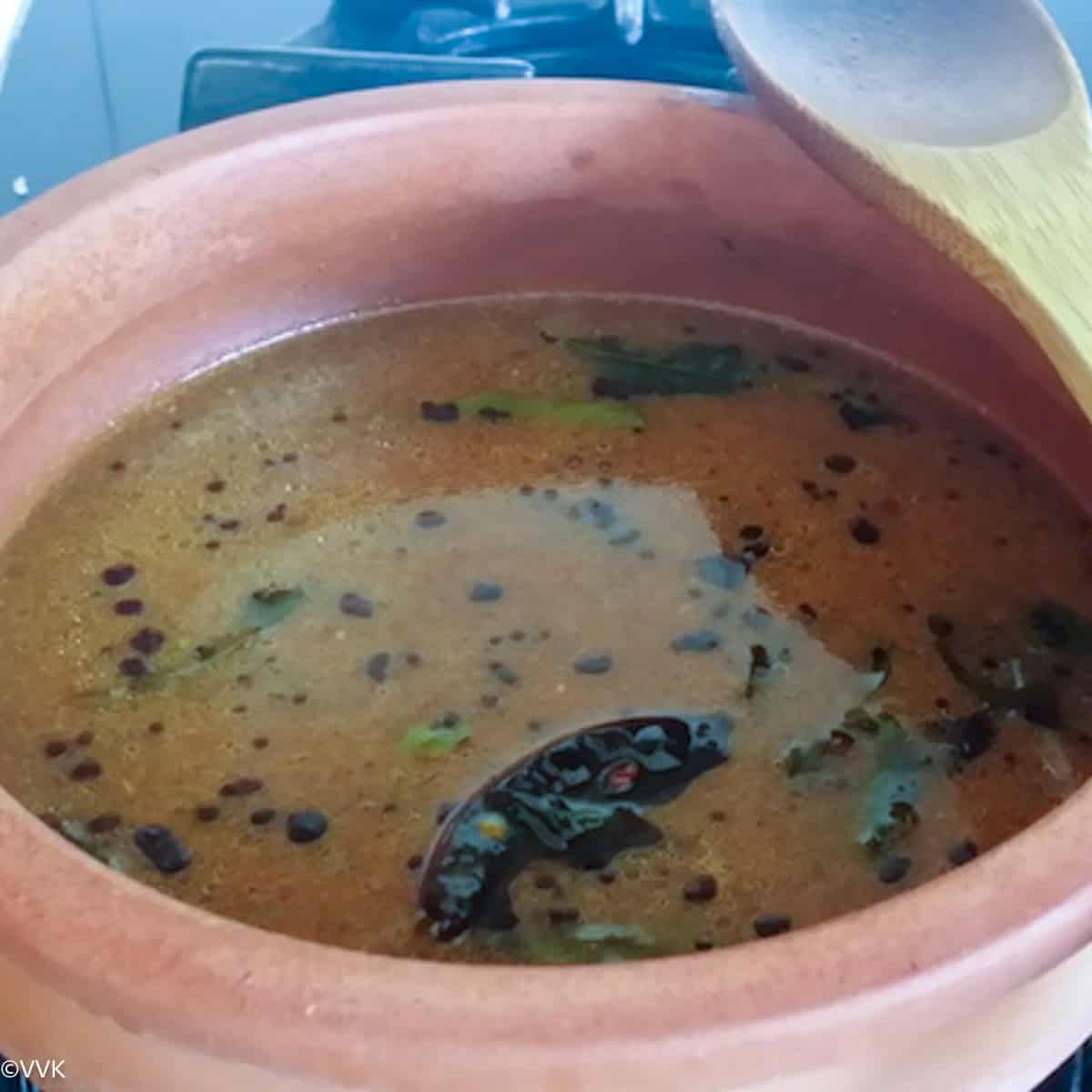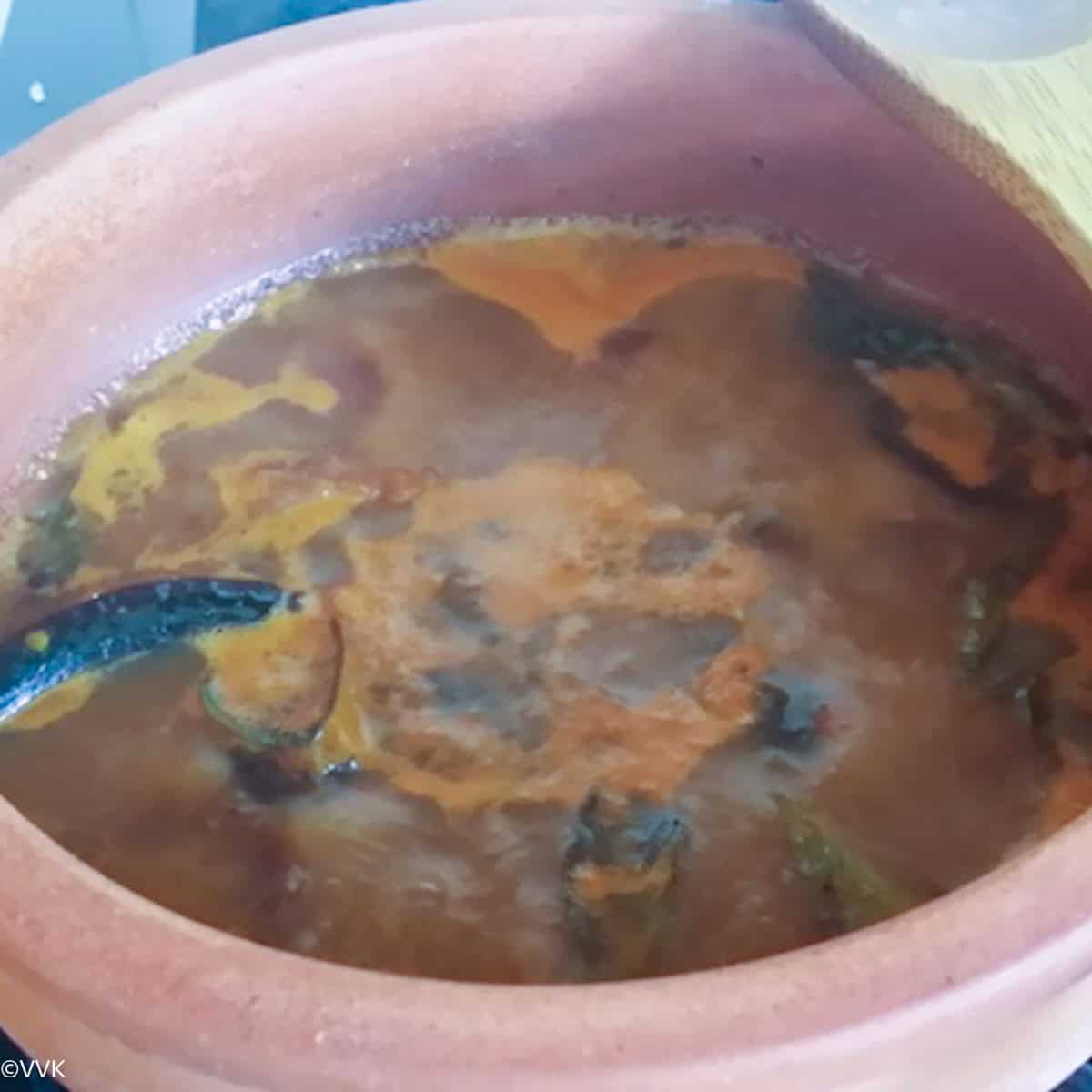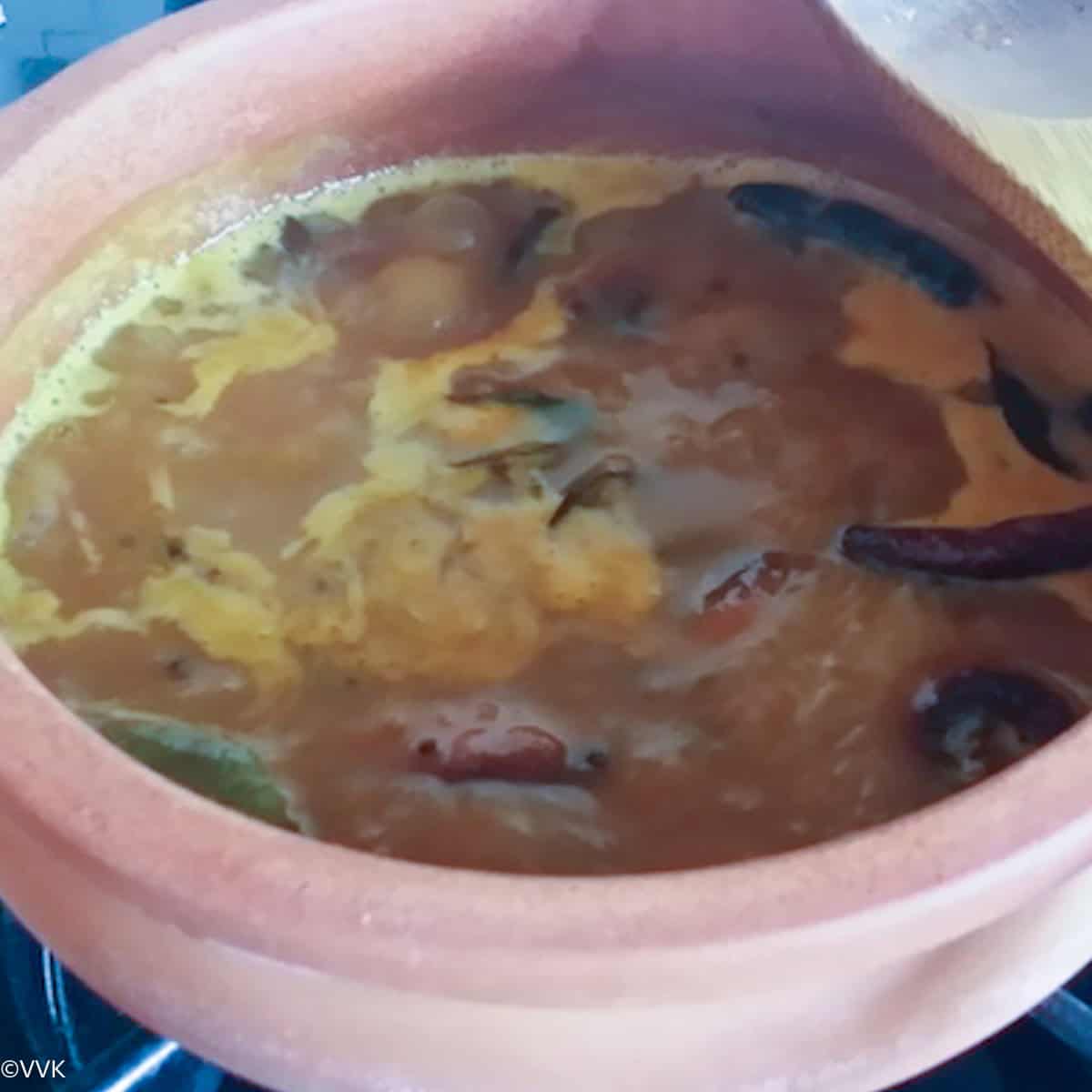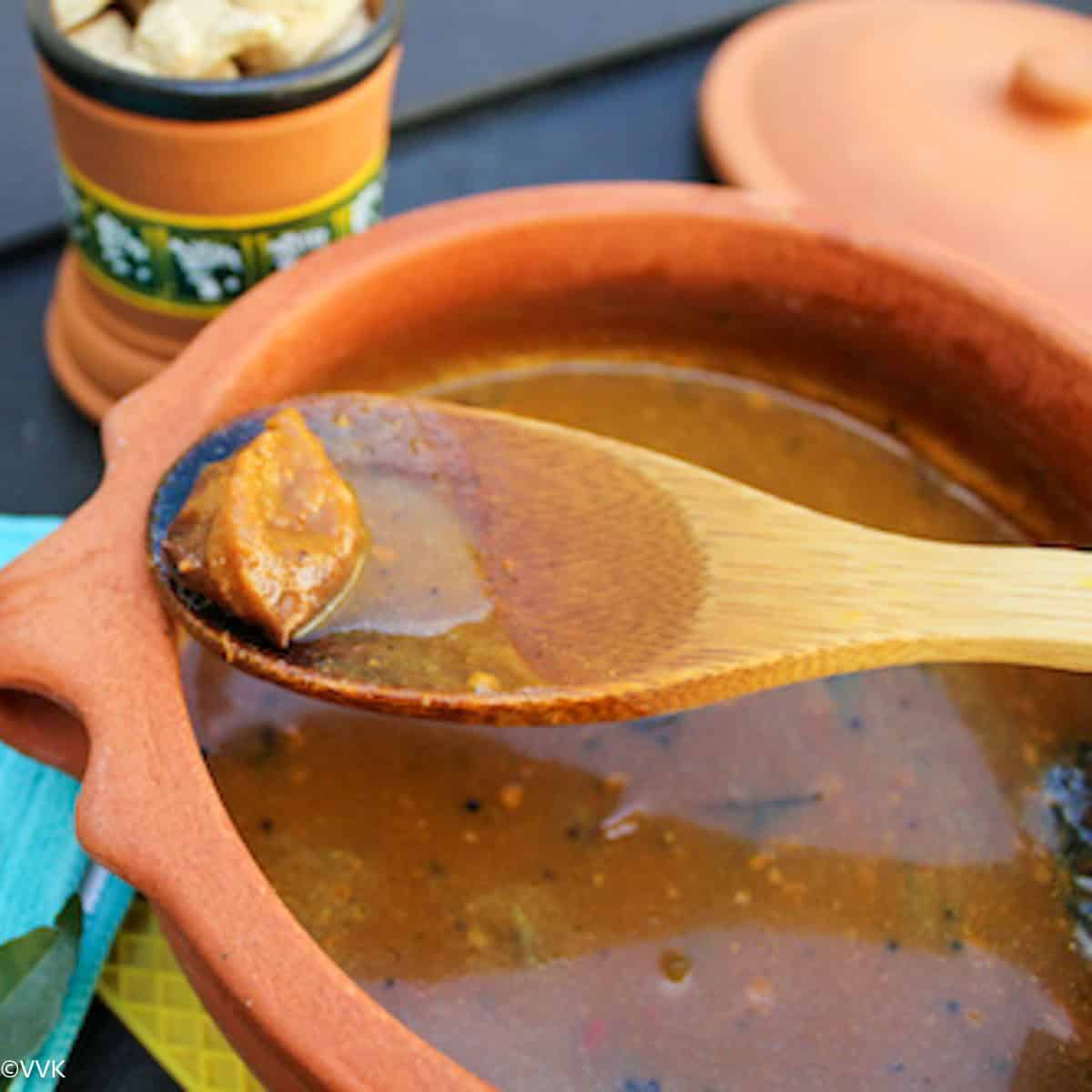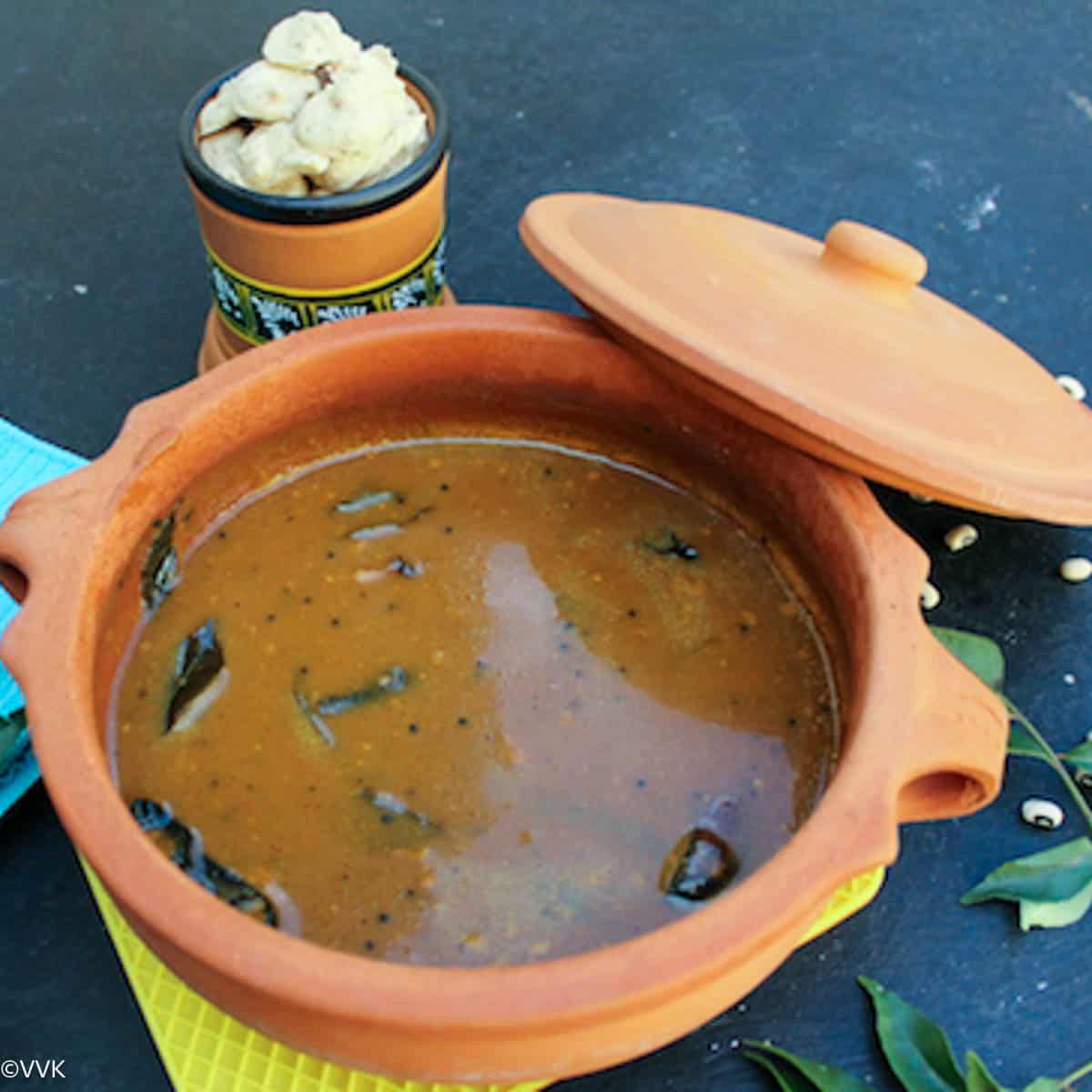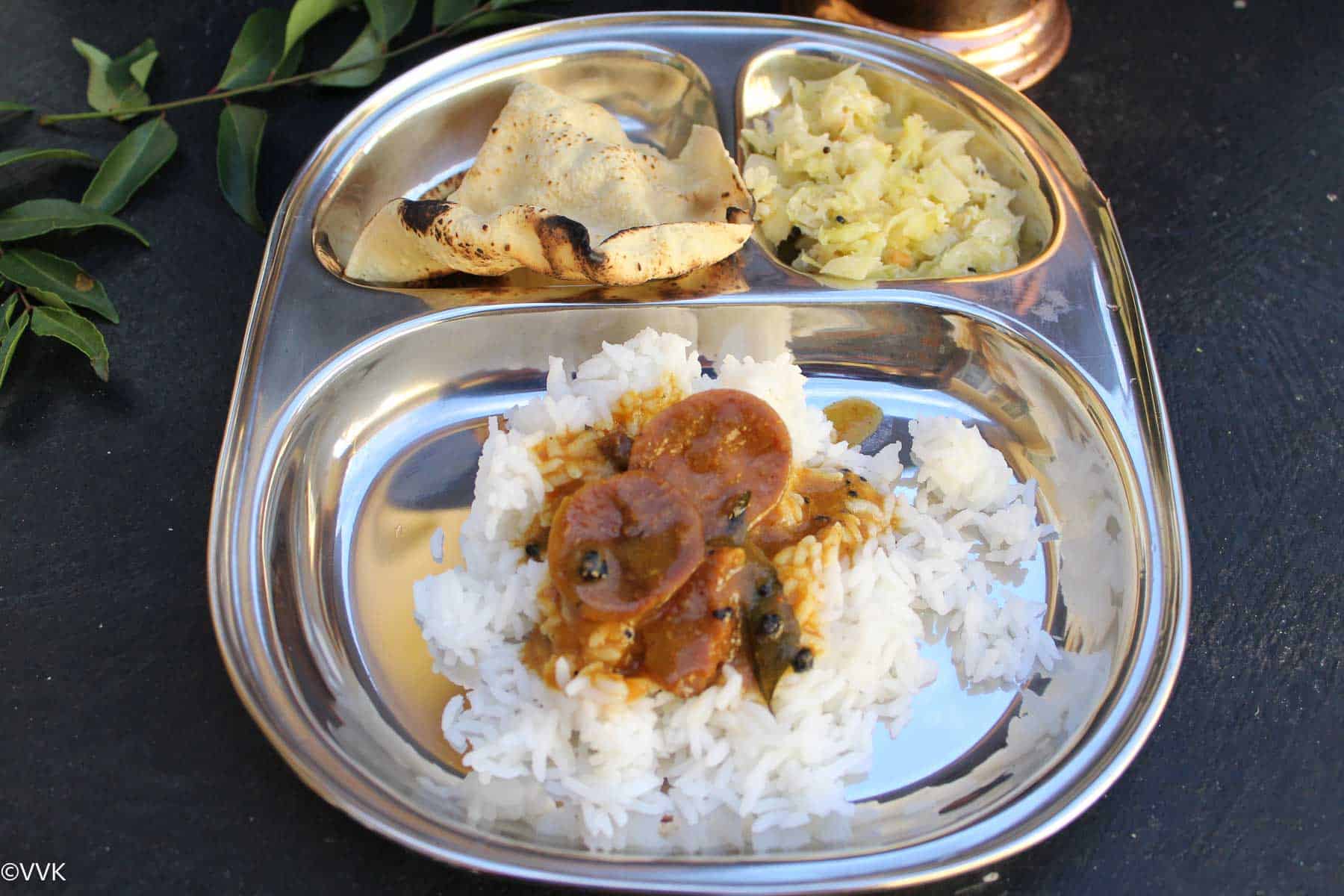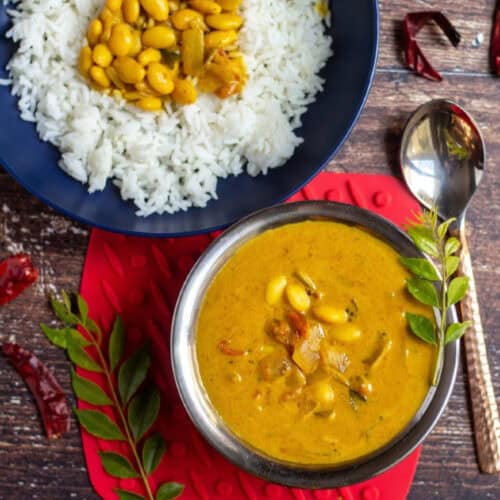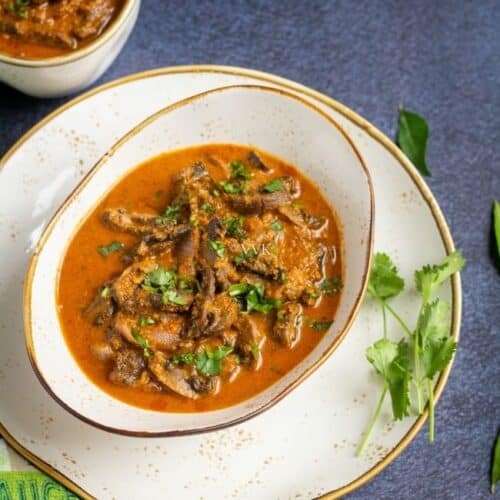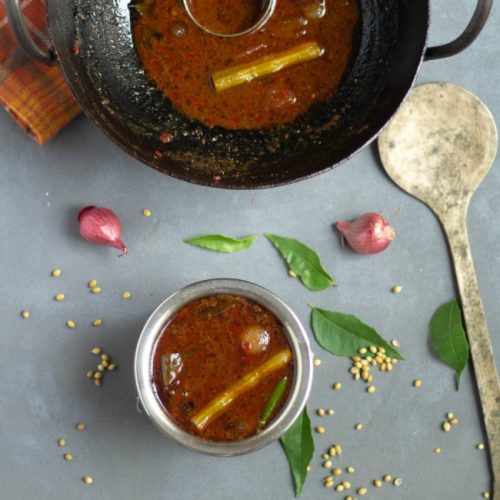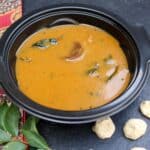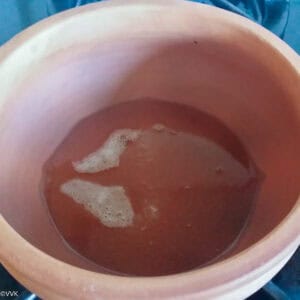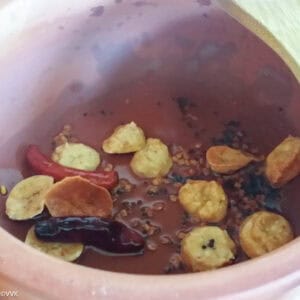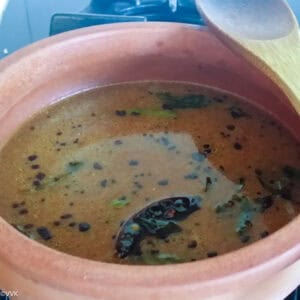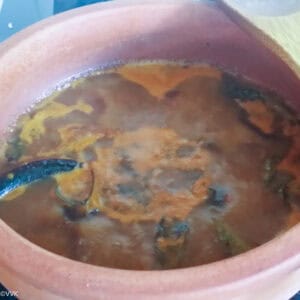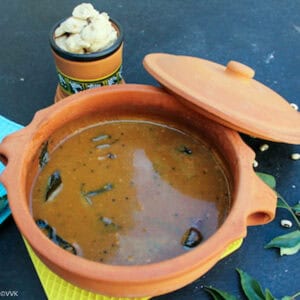So what’s vathal kuzhambu? It’s a tangy and spicy tamarind-based gravy usually made with sun-dried vegetables or berries known as “vathal.” This dish is a staple in Tamil cuisine, and you can serve it with steamed rice. It pairs well with fried appalams (papads), vegetable poriyal (stir-fry), or thayir pachadi (raita). I have already shared the no-onion, no-garlic Tamil Brahmin style of vathal kuzhambu with manathakkali / sun-dried black nightshade berries and arachuvitta vathal kuzhambu which is very popular in wedding menu with freshly ground spices. Now it’s time for a third vathal kuzhambu recipe with homemade karuvadam, which I shared before.
Ingredients required
Oil – I use a combination of gingelly oil and peanut oil or corn oil. You can use just gingelly oil very well, and I highly recommend not to skip gingelly oil. To Temper – We need mustard, fenugreek, asafoetida, dried red chilies, and toor dal. Yes, I add toor dal while tempering; while it’s optional, it imparts a nice flavor. Spice mixes – We need sambar powder and turmeric powder. You can use homemade or store-bought sambar powder. Kuzhambu vadagam: We need 12 to 15 pieces. I shared the homemade kuzhambu vadam recipe earlier; do check it out. Tamarind water: We need 1.5 cups of juice extracted from small lemon-sized tamarind or dilute one heaped tbsp of homemade tamarind paste in 1.5 cups of water. For rice flour slurry: To thicken the kuzhambu, we make a slurry with rice flour, and we need 1 tsp of rice flour and ½ cup of water. Apart from these ingredients, we need salt and curry leaves. Please check the recipe card for exact measurements.
Dietary specifications
This vathal kuzhambu is vegan and nut-free by nature. Use gluten-free asafoetida for a gluten-free version. You can store vathal kuzhambu in the refrigerator for up to three days. Leftover vathal kuzhambu always tastes even better!
How to make karuvadam vathal kuzhambu
Heat the kadai and add oil.
When the oil is hot, then add mustard seeds, fenugreek seeds, toor dal, asafoetida, and red chilies (whole piece or break into small pieces)
Once mustard seeds start spluttering, add the karuvadam and fry till they turn brown.
Reduce the heat to low and add tamarind water. Add turmeric powder and salt and let it simmer for 5-7 minutes.
Add the curry leaves and sambar podi and mix well. Make sure the sambar powder mixes well, and there are no lumps. Let it boil again for about 5 to 7 minutes.
Mix rice flour with ½ cup of water (if you want a thick consistency, make a thick paste by reducing water) and add it to the kuzhambu.
Bring it to one more boil, and that’s it. Kuzhambu is ready.
Recipe Notes
As the fryums also have salt, add less salt and adjust accordingly. I prepare this kuzhambu comparatively tangy and a bit more spicy than the regular vathal kuzhambu, as the soaked fryums taste better with spicy and tangy gravy. But adjust according to your preference. If you have homemade kuzhambu masala thool or store-bought kuzhambu masala, you can use that instead of sambar powder. Gingelly oil is preferred for its authentic flavor, but you can use other cooking oils if necessary.
What to serve with it
You can enjoy this vathal kuzhambu with rice and poriyals or kootu of your choice, like,
Baked potato fry Cabbage poriyal Beetroot poriyal Keerai kootu Ridgegourd kootu
Or with raita like
Dangar Tomato raita Onion raita Okra raita
Typically, vathal kuzhambu and paruppu usili are amazing combinations, but as we add kuzhambu vadagam, which is also made of lentils, I would serve this with other sides.
Explore delicious South Indian kuzhambu varieties
If you’ve made this karuvadagam vathal kuzhambu recipe, please share your photos with me on Pinterest, Facebook, Instagram, YouTube, or Twitter – I will be delighted to see your results!
📖 Recipe
Update Notes: Earlier posted in 2016, now updated with recipe card.
